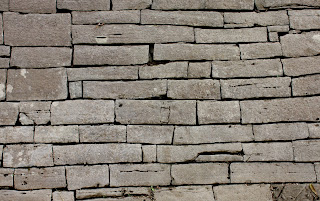We have had a couple of rainy days here on the central coast of Belize. It is warm and breezy, but the sun has stayed away, and there are occasional showers, sometimes very intense. Thunder and lightning were prominent last night.
No problems, the weather is warm enough that we just need to find shelter to relax under. Although the Belikin has turned me off beer, they have re-introduced me to rum, and there is no lack of that or fruit juices with which to mix around these parts. We have also taken the opportunity to explore the countryside. We are Vancouverites: you say Rain, we say Opportunity.
Day 1 we drove down to the "deep south" of Belize, driving southwest from the Garifuna-dominated central coast to a region of almost all Maya culture. Travelling through the hilly jungle, you pass through acres and acres of citrus farms and banana plantations. There are a lot of boom-and-bust towns around here, with a logging boom being followed by a coaca boom followed by a marijuana boom, but nothing seems to be booming these days. The Maya live mostly in thatched-roof houses with log or timber siding that, although lacking in R-value, seems to make up for it in ventilation.
Like most of Belize, the nicest buildings seem to belong to the churches. Although there is a large Catholic Church on top of the hill in San Antonio (the largest Mayan village in the area), it is the Pentecostals, the Baptists, the Adventists, and the Mormons who seem to be doing the hard sales in Belize. Being nearby and predominantly English-speaking, the small villages of Belize appear to be prime targets for American Evangelicals. We also saw more Mennonites here as well, of the girls in flowered smock, tow-headed boys in straw hats and suspenders riding a horse-drawn carriage type. they apparently fled to Belize when countries further north started asking them to pay property taxes or send their kids to school. They are now sitting on some of Belize's richest oil fields, but that is another story for another time.
While in the Mayan Mountains proper, we stopped off to see two distinct sets of ruins.
Nim Li Punit is your typical pile-of-limestone-blocks type of Mayan Ruins, from the Middle Classic period (think late Roman Empire to early Middle Ages). Two things really sand out here. One are the large number of well preserved stelae, or large engraved stone pillars. The second are a series of royal tombs uncovered, which at the time contained bones, teeth, and artifacts connected to the burial rituals.
This was also a site where the car refused to stop. It had been raining on and off, and the hard gravel parks lot had a layer of mud and grass on it. When pulling into the parking spot available, the truck didn't stop, but kept sliding along at less than 5km/h towards the bush. The slope could not have been more than 1%, but the ground was so slick, we slid right through the guard rail. It took 10 minutes, two strong guys and 4 wheel drive to back us out of there. On an essentially flat lot. The Park Staff, although helpful, seemed a little perplexed by the dumb-ass Canadians who couldn't drive on a flat surface. Tourists... at least we took nothing but pictures, and left nothing but tire prints.
Our second set of ruins for the day were something rather different. Lubaantun is notable for not being limestone, but slate. The large structures were build using precision-cut stones and generally without mortar, with curved surfaces that sort of locked the pieces together (more in the way of cafeteria trays than like Lego). As a result, both the restored and un-restored parts of the ruins look very different than at most sites we have seen in Belize. A large amount of pottery and other ceramics were found here, along with blades and tools made of various rocks, from jade to chert, which leads them who know these types of things to speculate that this was mainly a centre of trade and commerce, as opposed to a religious site like Nim Li Punit. I think they draw too much distinction between religion and commerce, but I digress...













No comments:
Post a Comment